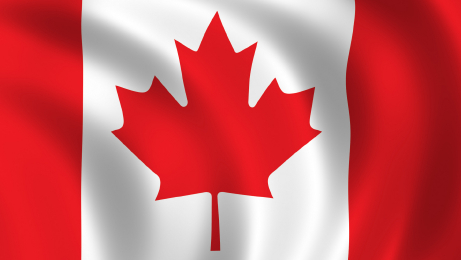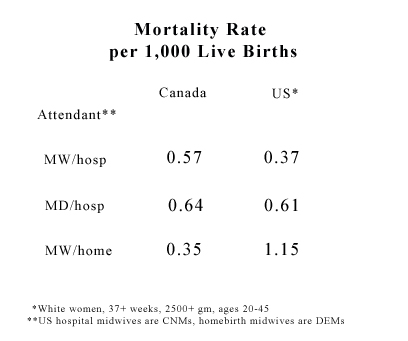
American homebirth advocates are celebrating a new Canadian study of homebirth. I suspect that they don’t realize that it’s not good news for them. Indeed, the study shows that homebirth with an American direct entry midwife has more than triple the death rate of homebirth with a Canadian midwife.
First, a little background on the study, Outcomes of planned home birth with registered midwife versus planned hospital birth with midwife or physician. The lead author is Patricia Janssen who published a similar study in 2002 and then was forced to publicly retract the conclusion that homebirth is safe because the homebirth group had two perinatal deaths and the hospital group had none.
Dr. Janssen presented a much more careful and rigorous study this time. The study population was drawn from all births in British Columbia from 2000-2004. Patients were divided into three groups, homebirth, hospital birth with a midwife and hospital birth with a doctor. Risk levels were matched by excluding anyone from either hospital group if they would not meet the eligibility criteria for homebirth. The key finding:
The rate of perinatal death per 1000 births was very low and comparable in all 3 groups: it was 0.35 (95% confidence interval [CI] 0.00–1.03) among the planned home births, 0.57 (95% CI 0.00–1.43) among the planned hospital births attended by a midwife and 0.64 (95% CI 0.00–1.56) among the planned hospital births attended by a physician. There were no deaths between 8 and 28 days of life.
These results are good news for Canadian homebirth advocates, demonstrating that homebirth in Canada is as safe as hospital birth. However, the results are very bad news for American homebirth advocates. They throw into sharp relief the dangers of homebirth in the US.

The death rates for hospital births in Canada are comparable to the death rates for American hospital births in 2003-2004. However, the homebirth death rate for American midwives is more than triple the homebirth death rate for Canadian midwives.
There are two reasons for this.
1. American homebirth midwives have less education and training than Canadian midwives. Canadian midwives attend both hospital and homebirths, and therefore have extensive education and training in the recognition and treatment of complications. They receive comparable training to American certified nurse midwives.
2. There are strict eligibility requirements for homebirth in Canada. You can’t have a homebirth simply because you want one. You must be very low risk because anything else is considered too dangerous.
The new Janssen study has many strengths, but it has one glaring weakness. It fails to provide the nature and circumstances of the deaths in each group. Since there were only 7 deaths in the entire study, it is an inexplicable omission. That is especially relevant since the authors chose an unusual measure of mortality. Rather than using neonatal mortality (birth to 28 days) or perinatal mortality (from 28 weeks of pregnancy to 28 days of life), they used deaths from 20 weeks of pregnancy to 7 days of life.
It is widely recognized that stillbirths prior to 28 weeks have nothing to do with obstetric care. Therefore, the decision to include stillbirths from 20-28 weeks raises the possibility that the authors chose to include such stillbirths to make the numbers from the hospital group look poor by comparison to the homebirth group. Unless and until the authors are forthcoming about the circumstances of the deaths, we need to reserve judgment about what the study really shows. If the early stillbirths are removed, the study may actually show that homebirth in Canada is not as safe as hospital birth.
addendum: CMAJ has published my letter about the paper. It can be found

